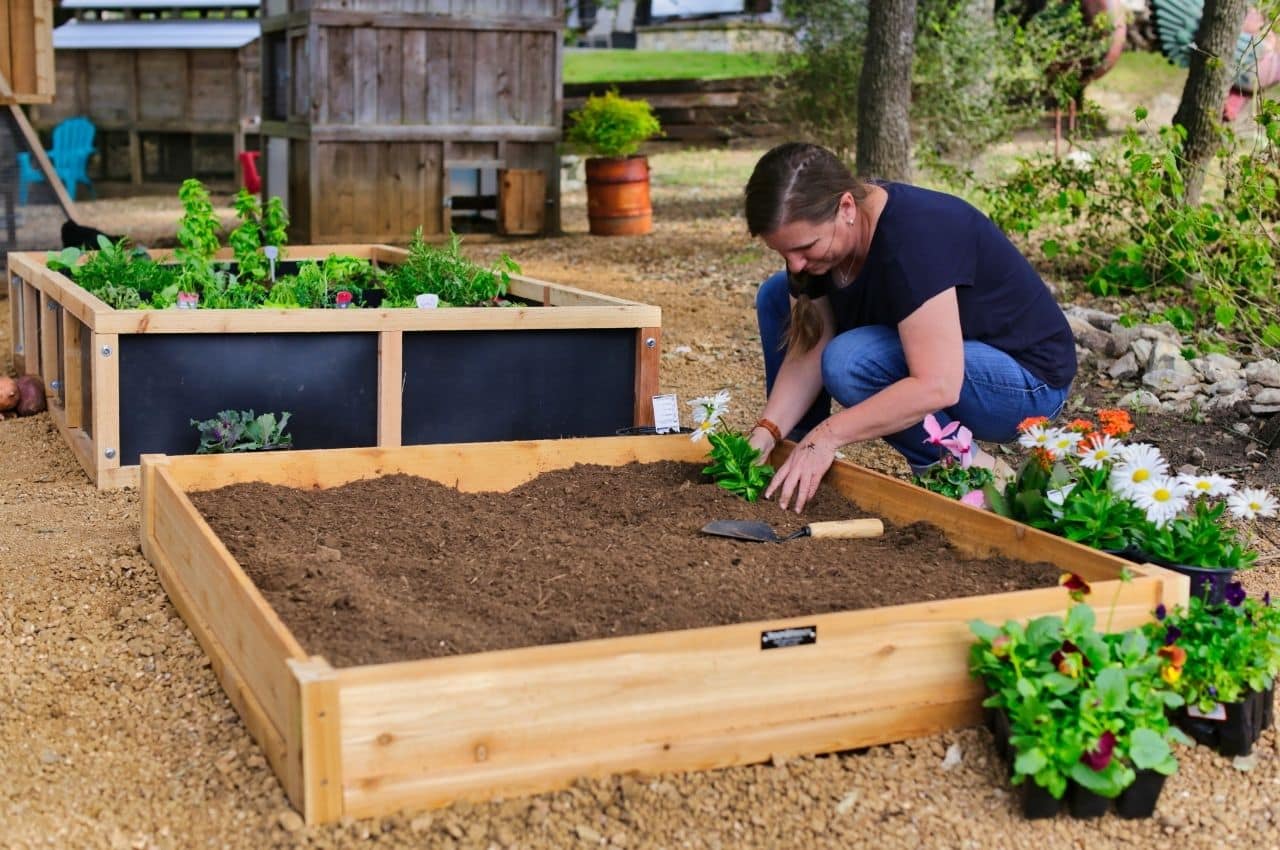
Raised garden beds are loved by new and experienced backyard gardeners everywhere, and the reasons are plentiful! The feasibility of harvesting, soil control, and drainage are just a few of our favorite raised garden bed aspects. If you are a beginner to raised bed gardening, there are a number of important factors to consider before getting started! Follow our helpful raised bed gardening for beginners guide below to help start and reach your backyard gardening goals!
Garden Bed Depth:
Common garden bed depths will come in at either 6” or 14-16” deep. Deep-rooted plants will require more space for roots to expand. Shallow garden beds will do just fine for shorter root systems. To ensure you have enough depth in your raised garden bed, it’s important to plan which vegetables you will be growing. Make sure to plant the following options according to their recommended planting depth.
If planting in a 6” inch deep garden bed, aim to plant low rooting herbs, leafy vegetables, or small root vegetables in these more shallow garden beds. Our favorite plant recommendations include Arugula, leeks, lettuce, onions, radishes, spinach, basil, chives, cilantro, dill, mint, oregano, parsley, and thyme.
If planting in a 14-16” inch deep garden bed, you will have more choices as to which plants you can grow. If you have a wide base model garden bed, you can grow popular vine plants such as beans, cantaloupe, cucumbers, and summer squash around the edges of your garden bed to allow vine plants to hang over the edges of your bed or climb any structured wire fencing. Among other plants, we also recommend beets, broccoli, brussels sprouts, cabbage, carrots, cauliflower, collards, garlic, kale, swiss chard, turnips. If you are looking to add some chicken-loved plants, you can include Lavender, Rosemary, and Sage, all of which provide excellent health benefits to your flock. For more chicken-friendly options, visit our blog post 8 Chicken Healthy Herbs To Grow Next to Your Coop.
Plant Companions:
Take into consideration any compatible companion plants, especially when considering vined vegetables which will overtake any fragile neighboring plants. Companion planting will allow your plants to share nutrients and ward off any unwanted pests. Some planting flowers, such as Marigolds, can help deter particular beetles and worms that are planted near the right vegetables, such as potatoes, squash, and tomatoes. However, if not careful some plant considerations can stunt growth or spread both diseases and pests to your crop. For example, planting herbs near cucumbers will oftentimes impede growth!
Choosing a Location:
Make sure to place your Raised Garden Beds carefully in one permanent location. Place your garden beds in a flood-prone area that receives 8 or more hours of full sun. Additionally, make sure to place your garden bed in a location that is easily accessible by a watering hose.
Prior to filling in the area with dirt, make sure to remove any grass and loosen the dirt to improve drainage. Loosening the dirt will also allow your deeper rooting vegetables to grow deeper without difficulty. You can choose to leave the bottom of your newly loosened dirt as is before adding your soil mixture or you can place a flooring to keep burrowing animals or weeds out. Flooring options can include landscape fabric, cardboard, or wire mesh.
Soil Composition:
Before you begin planting any seeds or transitioning any potted plants, establishing your soil composition is important in creating a healthy ecosystem for your plants to grow in. There are a number of soil ingredients available and recommended to build the right soil mixture for your growing garden. The top-recommended soil combinations always include 50% of high-quality topsoil, compost (either homemade or store-bought), and a low percentage of optional potting soil or a mixture of organic material.
The soil recipe you choose will come down to your preference, price range, and local availability. Once you’ve decided on a soil mixture, make sure to add a light layer of mulch to the very top, this can be from 1″ to 3″ inches. Depending on the mulch material you use, too much mulch will prevent water from reaching your crop and too little won’t keep weeds away or keep your soil cool.
We hope you find these first-time backyard gardening tips helpful as you begin your backyard farming journey! If you ever have any questions regarding anything that is mentioned in this blog post, reach out to us at 877-741-2667 or email us at support@roostandroot.com.
For more raised garden bed help, visit our blog post 5 Ways Raised Garden Beds Can Increase Your Gardening Success.
We’re real people and always happy to help!


